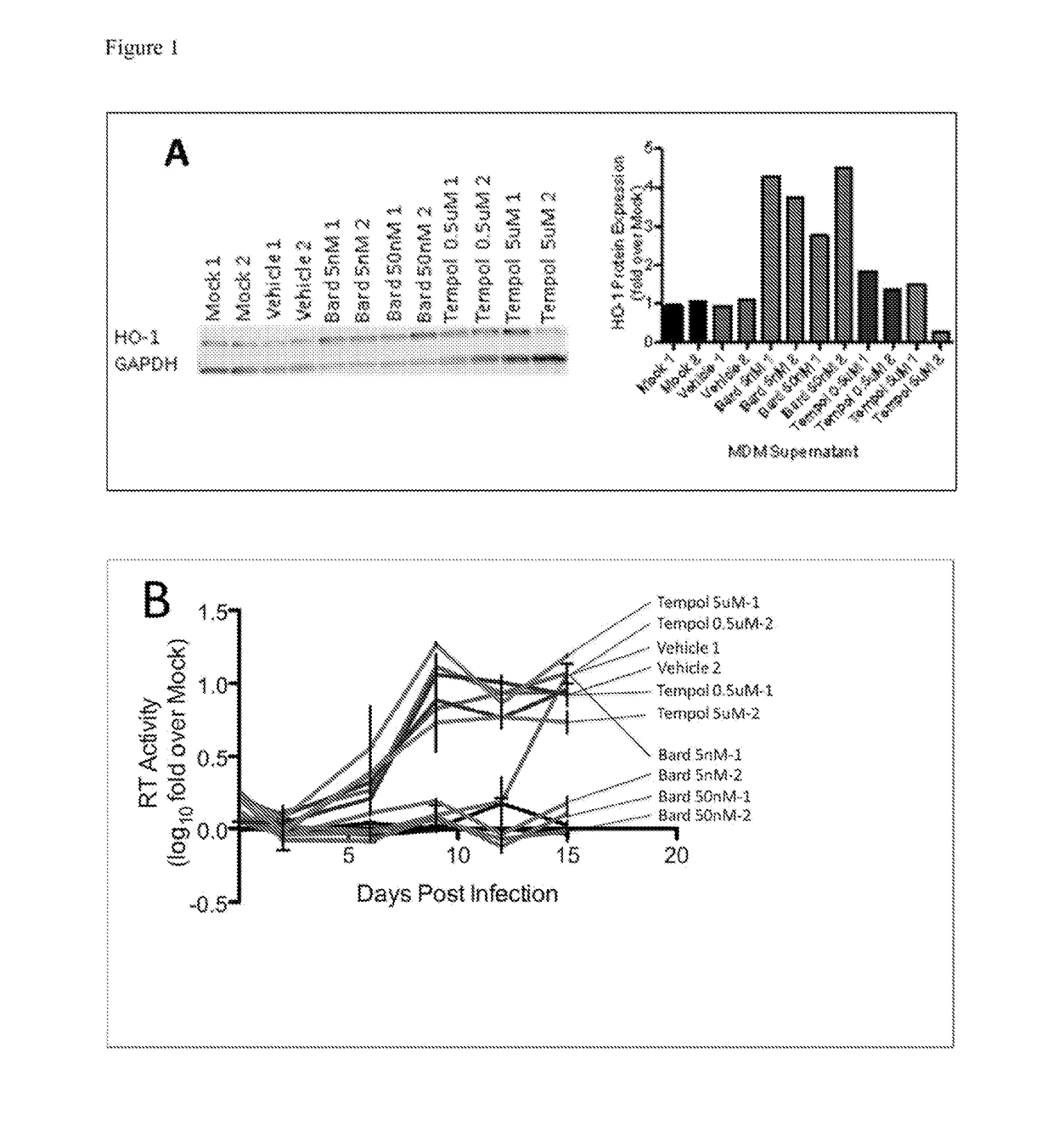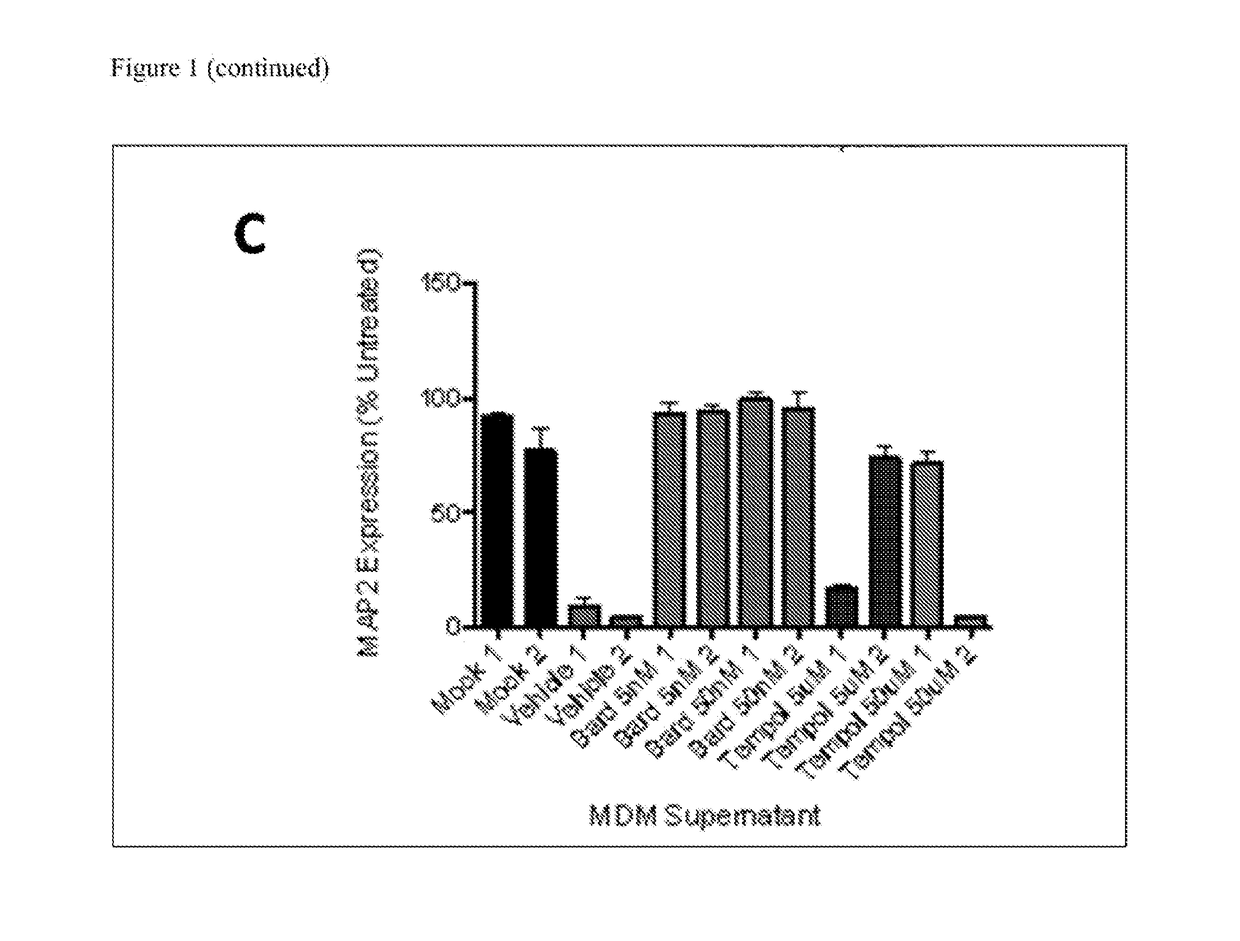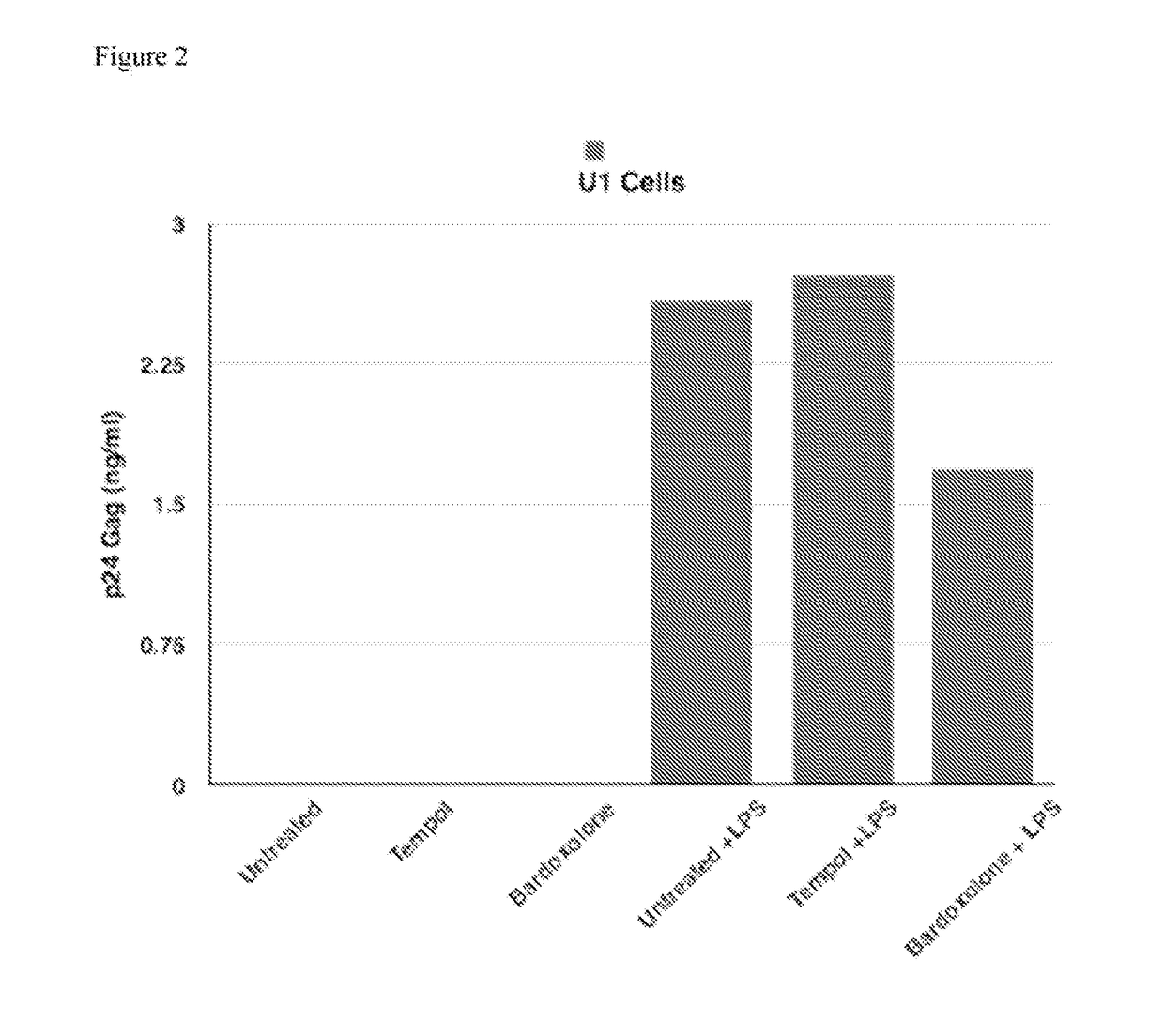Compositions and methods for treating hiv-associated cognitive dysfunction
a cognitive dysfunction and composition technology, applied in the field of compositions and methods for treating hiv-associated cognitive dysfunction, can solve the problems of neurocognitive and neuropsychiatric dysfunction, loss of cell-mediated immunity, and progressively more susceptible to opportunistic infections, so as to achieve the effect of treating or preventing cognitive dysfunction
- Summary
- Abstract
- Description
- Claims
- Application Information
AI Technical Summary
Benefits of technology
Problems solved by technology
Method used
Image
Examples
example 1
The importance of the KEAP1 / nrf2 Pathway in a Clinical HIV+ Sample
[0058]Large scale gene expression and genomic studies were under taken in order to discovery pathways and biomarkers related to HAND. See also Levine et al., J. Neuroimmunology; 265:96-405 (2013), hereby incorporated by reference in its entirety. Transcriptome studies of HIV+ adults indicate that oxidative stress indicators within peripheral blood monocytes may be one of the strongest correlates of neurocognitive dysfunction in HIV° adults. This was shown by the increased expression of the Kelch-like erythroid CNC homologue (ECH)-associated protein 1 (KEAN.). Under normal physiological conditions, KEAP1 binds the nuclear transcription factor erythroid 2p45-related factor 2 (nrf2) in the cytoplasm. Exposure to oxidative stress elements (e.g., LPS, ROS, inflammatory cytokines, NOX-1) reduces the affinity between KEAP1 and nrf2, with the latter then being freed for nuclear translocation, where it binds to the antioxidant...
example 2
The Identification of AIMs to Target the KEAP1 / nrf2 Pathway in a Clinical HIV+ Sample
[0060]In addition to these compelling in vitro and in vivo findings, certain aspects of this invention demonstrate the relevance of the KEAP1 / nrf2 pathway in a clinical HIV+ sample, and that cells outside of the nervous system can be targeted. This is highly important, as thus far all putative HAND treatments focusing on the CNS have been disappointing. A class of compounds, called antioxidant inflammation modulators (AIMs) has been identified with great promise in specifically targeting this pathway in peripheral blood mononuclear cells.
[0061]While other treatments have targeted other aspects of the cellular anti-oxidant response in brain cells, certain aspects of this invention discloses a crucial step that has a wide range of beneficial downstream effects, and it occurs in peripheral blood cells.
example 3
Bardoxolone, an Exemplary AIM, Suppresses Viral Replication and is Neuroprotective
[0062]Monocyte-derived macrophages (MDM), obtained from uninfected donors, were pretreated with Bardoxolone (5 nM or 50 nM), Tempol, 4-hydroxy-2,2,6,6-tetramethylpiperidin-1-oxyl, (500 nM or 5 μM) or control (0.05% DMSO) for 24 hours prior to HIV infection. The respective drug or control was replaced with each medium exchange (every three days) throughout the course of infection, Bardoxolone treatment resulted in enhanced expression of HO-1 in HIV-infected MDM, as well as in non-infected MDM. See FIG. 1, Panel A. This enhanced HO-1 expression decreases release of soluble neurotoxins from infected MDM. “Mock 1” and “Mock 2” correspond to supernatant from untreated, uninfected macrophage run in parallel with treated macrophages. “Vehicle 1” and “Vehicle 2” correspond to supernatant from macrophages that received 0.05% DMSO and no additional drug. Final concentration of DMSO in all treated wells is 0.05%....
PUM
| Property | Measurement | Unit |
|---|---|---|
| neurocognitive disorder | aaaaa | aaaaa |
| concentrations | aaaaa | aaaaa |
| PHARMACEUTICAL COMPOSITIONS | aaaaa | aaaaa |
Abstract
Description
Claims
Application Information
 Login to View More
Login to View More - R&D
- Intellectual Property
- Life Sciences
- Materials
- Tech Scout
- Unparalleled Data Quality
- Higher Quality Content
- 60% Fewer Hallucinations
Browse by: Latest US Patents, China's latest patents, Technical Efficacy Thesaurus, Application Domain, Technology Topic, Popular Technical Reports.
© 2025 PatSnap. All rights reserved.Legal|Privacy policy|Modern Slavery Act Transparency Statement|Sitemap|About US| Contact US: help@patsnap.com



